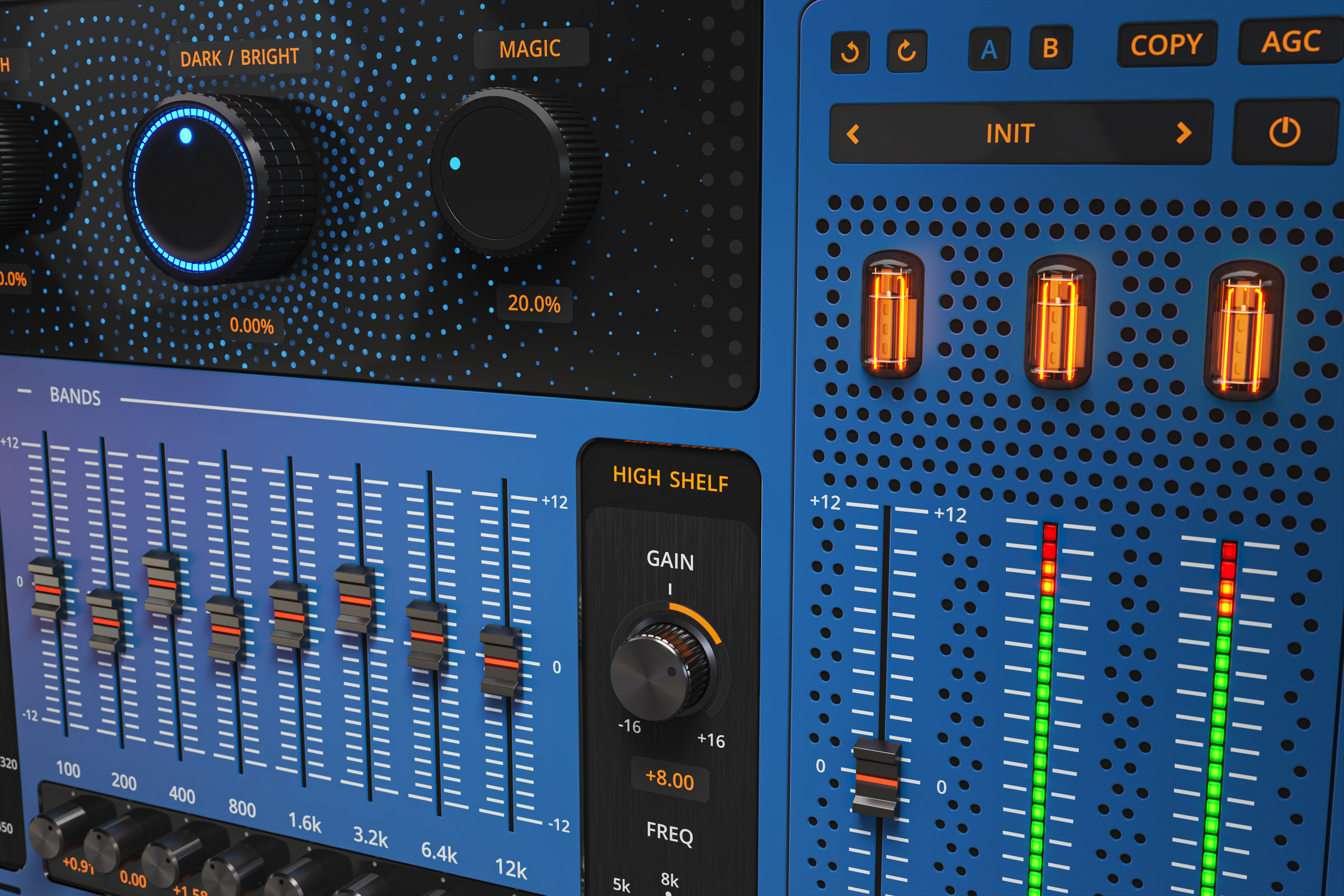FireEQ Manual
Download PDF
Before you dive into reading, consider watching the walkthrough video first:
Main Controls
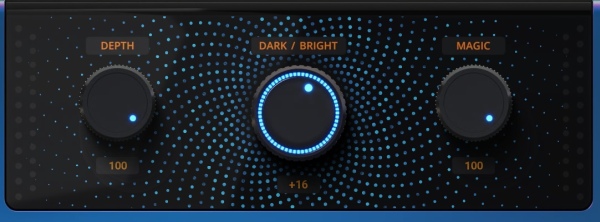
Depth - controls the overall amount of processing, sort of like dry/wet, but due to the phase shift equalizers induce, this needs to be implemented in a much more complex way.
Dark/Bright - controls a filter, which allows you to make the sound brighter by amplifying treble and attenuating bass (values above zero), or vice versa.
Magic - implements a complex dynamic processing, which flattens the sound making things more even. In its essence, it amplifies what is silent and attenuates what is loud. Sort of like a multiband compressor.
Output - defines the output gain, which you can use to control the output volume since the EQ is likely to change it. Consider using AGC, too.
AGC - activates the automatic gain compensation, which makes the plugin match output loudness to the input. That makes you avoid the loudness trickery, which may otherwise make you feel like you are making things better by amplifying frequencies, but that could in fact be caused just by the increased loudness.
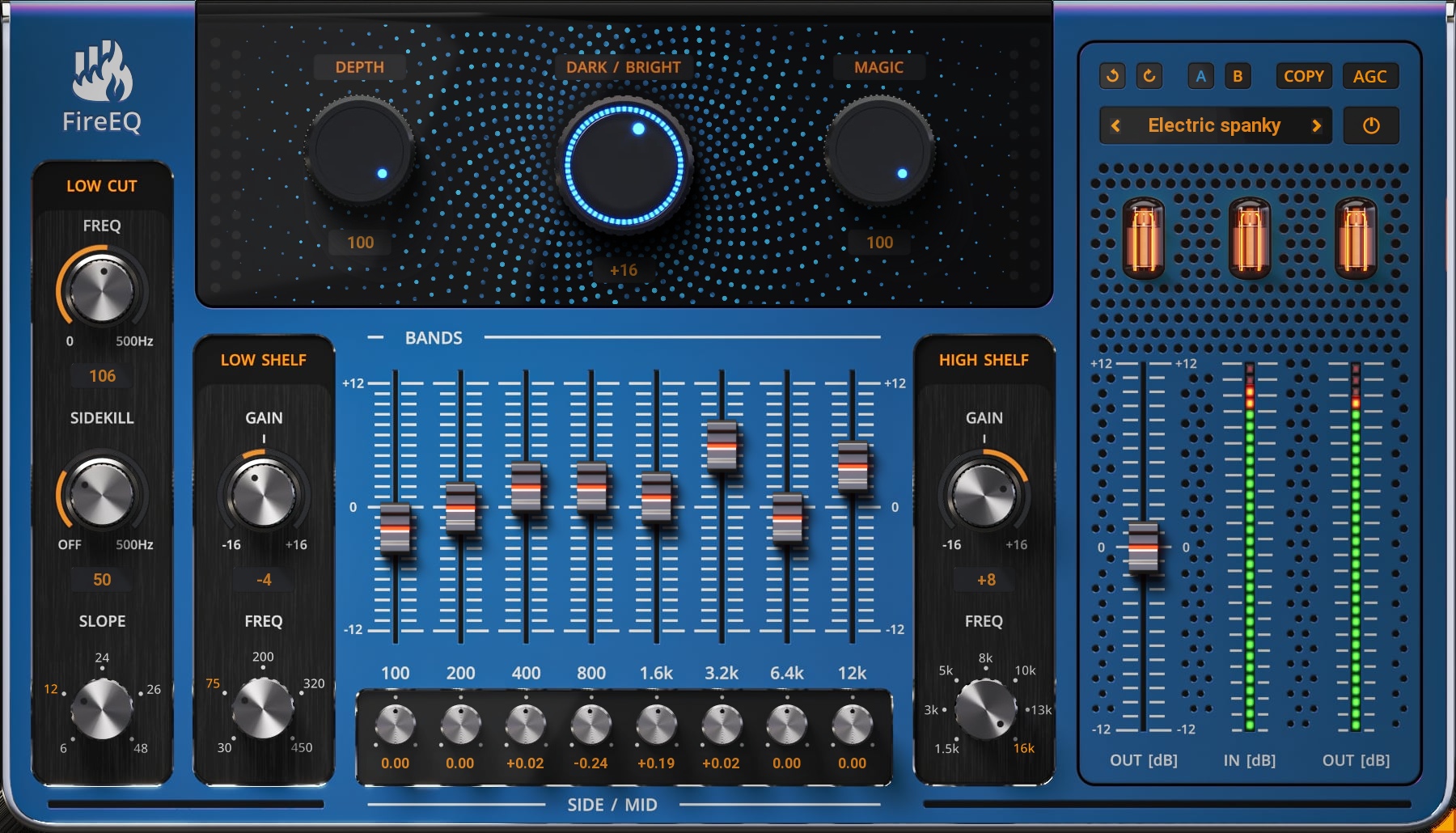
Low Cut
Frequency - controls the low-cut filter frequency - it will remove frequencies below this value. It is a good practice to remove everything that is not part of the useful signals - e.g. for vocals, you should probably remove everything below 50Hz (higher for female vocals, for example) because the vocals themselves cannot produce these frequencies, so if anything was recorded there, it will only be some unwanted rumble, which would be cluttering the mix if not removed.
Side kill - controls the low-cut frequency of a filter, which only affects the "side" signal, the stereo portion. It is a common practice to remove all stereo content for low frequencies since these could otherwise cause problems on bigger playback systems.
Slope - controls the slope of both Low-cut and Side-kill filters. The steeper the filter is, the more of the frequencies below the limit can be removed, but the CPU consumption increases, and it may sound a bit artificial when overused.
Low Shelf
Low shelf Gain - controls the gain of the low shelf filter, which controls low frequencies. In other words, you can control the bass with it. This and the High shelf Gain are usually the most essential EQ controls.
Low shelf Frequency - controls the frequency of the low shelf filter. Since this is based on some well-known analogue EQ, only a predefined set of frequencies is available. These are known to work well with most materials.
High Shelf
High shelf Gain - controls the gain of the high shelf filter, which controls high frequencies. In other words, you can control the "air" with it. This and the Low shelf Gain are usually the most essential EQ controls.
Low shelf Frequency - controls the frequency of the low shelf filter. Since this is based on some well-known analogue EQ, only a predefined set of frequencies is available. These are known to work well with most materials.
Bands
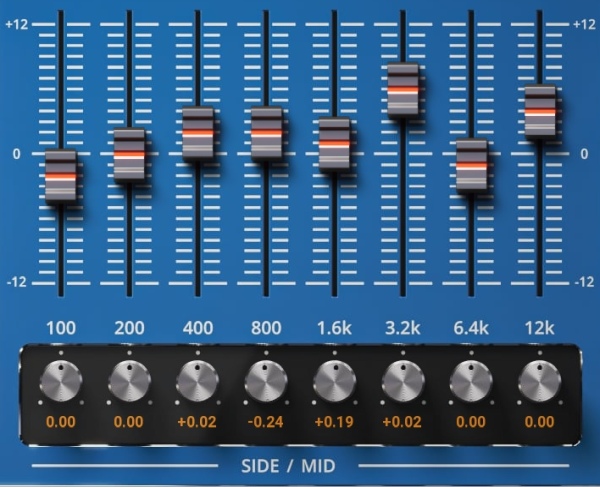
The faders control the gain of the filter, affecting particular frequencies (based on the description). The faders are stepped (+/-12 dB steps).
Side/Mid
Side/Mid defines the gain of the filters affecting frequencies surrounding the nominal with opposite gain for mid & side signals. This, in effect, lets you control the ratio between mid and side in that area, hence controlling the stereo image. Negative values make the signal more "side" (stereophonic, wide). Conversely, positive values make the signal more "mid" (monophonic).
FireEQ Toolbar
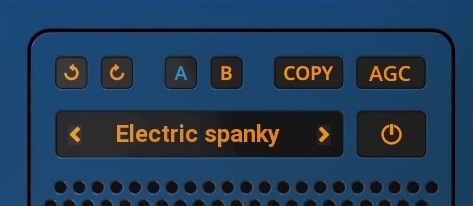
FireEQ features several standard controls, which can improve your workflow.
A, B and Copy buttons - The plugin remembers two sets of settings, A and B. Clicking any of these two buttons switches between these two settings. The selected one is highlighted in red. This is a great way for A/B checking and selecting the best settings. The "Copy" button copies the current settings to the other slot (if A is currently selected, the button will copy the current settings to slot B).
Presets and right and left arrows - The plugin comes with a set of presets, which should do the trick for most cases. Access them using the right and left arrows or by clicking the preset field directly. There you can save and manage your own presets as well. On your computer, presets are stored in the following paths:
Windows:
C:\Users\username\Documents\FireSonic\FireEQ
Mac OS X:
HOME/Documents/FireSonic/FireEQ
Undo and Redo buttons - All of us make a mistake from time to time, which is when these two buttons come in handy. Undo button reverts your last change, Redo puts it back.
Bypass button - It is always a good idea to check if the plugin actually improves your sound, which is what the bypass button is for. In many DAWs it will be in sync with the DAW's bypass button (if it has one).
AGC - Turns on the Automatic Gain Compensation which controls the output volume depending on the input gain changes. Leaves the Output Attenuator unaffected.
Right-Click menu
Right-click anywhere in the plugin background with the right mouse button, and you will get access to the following features.
Scale GUI precisely by per-cent.
Get the version info.
Access product web page, reach support and access online documentation.
Contact support
Open presets folder (to add, arrange or delete presets manually)
Activate/Deactivate the plugin
Access Licence manager (to activate or deactivate the plugin or several plugins at the same time)
Disable/Enable GPU Acceleration.
Disable/Enable Intelligent sleep on silence function that disables the plugin when no sound is on input or output to save the CPU power.
Right-click any control (knob, button) to access help for the particular parameter.
Double-click Menu
Some parameters let you access more accurate numeric settings by double-clicking the knobs.
Installation and maintenance
Installation is a quick and simple process involving downloading and using a standard installer on both platforms, Windows and Mac OS X. The installer places the plugins and presets in proper locations so that your DAW can easily find them. The plugin is available for all relevant interfaces: VST, VST3, AAX, and AU. Note that on OS X, since High Sierra, you may need to restart your computer to make your DAW find new plugins.
If you find yourself in trouble, please contact us via support@unitedplugins.com .
Updating
Updating the plugin to the newest version is as simple as using the newest installer.
Uninstallation on Windows
You can either use the link to the uninstaller in the start menu by typing FireEQ for example or it can be accessed via Control panels / Applications /
Uninstallation on Mac OS X
First, delete the plugin files manually from:
AU: /Library/Audio/Plug-Ins/Components
VST: /Library/Audio/Plug-Ins/VST
VST: /Library/Audio/Plug-Ins/VST3
AAX: /Library/Application Support/Avid/Audio/Plug-Ins
Then if you really want to get rid of all data created by the plugin, remove the following folders as well:
HOME/Documents/FireSonic/FireEQ
HOME/Library/Application support/FireSonic/FireEQ
Note: Since OS X 10.7 (Lion), many folders are marked as hidden by default. To make them visible again in Finder, please follow this tutorial.
Trial and activation
Initially, FireEQ is in demo mode. That lets you evaluate the plugin, try it in your mixing/mastering sessions and make sure it really does the trick. When ready, purchase a license from our shop (by clicking on the FireEQ logo in the middle) or any of our resellers. You will receive a so-called license file, which you download to your computer. The plugin displays an ACTIVATE button when in trial mode, so click on it and select the license file. The plugin will check the license and activate the license on your computer. After you restart your DAW, the plugin will be activated and will work indefinitely without restrictions. You can use the plugin on all your computers.
Support
Now that you’ve taken the time to learn all about FireEQ enjoy and make your sound awesome! If our plug-ins helped you take your production to the next level, let us know, we’d love to hear from you and what you were able to create with our software.
If you encounter any problems, we offer free technical support for all registered users. Start with the frequently asked questions.
If you need further assistance, you reach our Customer Support.
You can also reach our support staff by e-mail at:
support@unitedplugins.com

